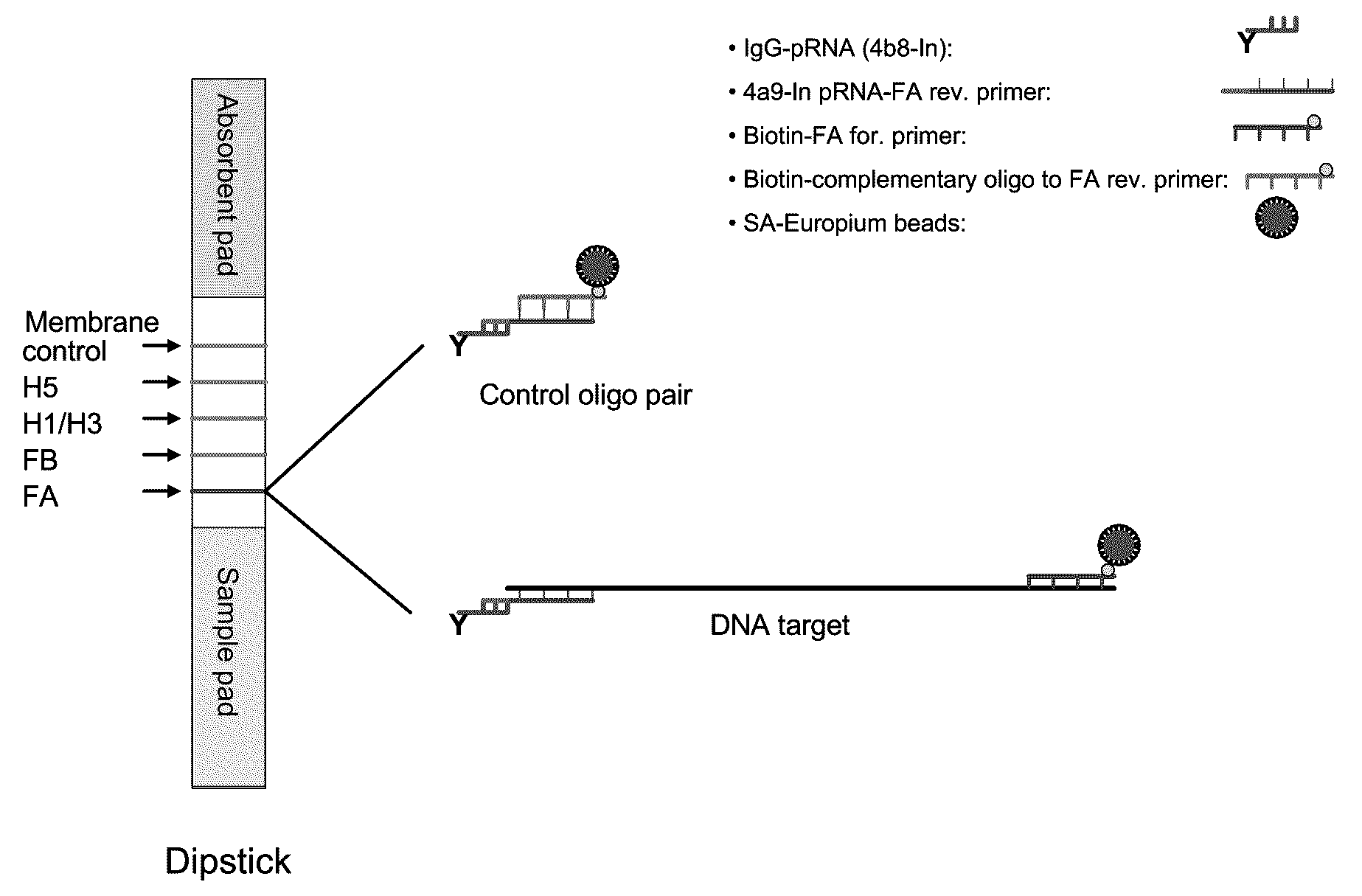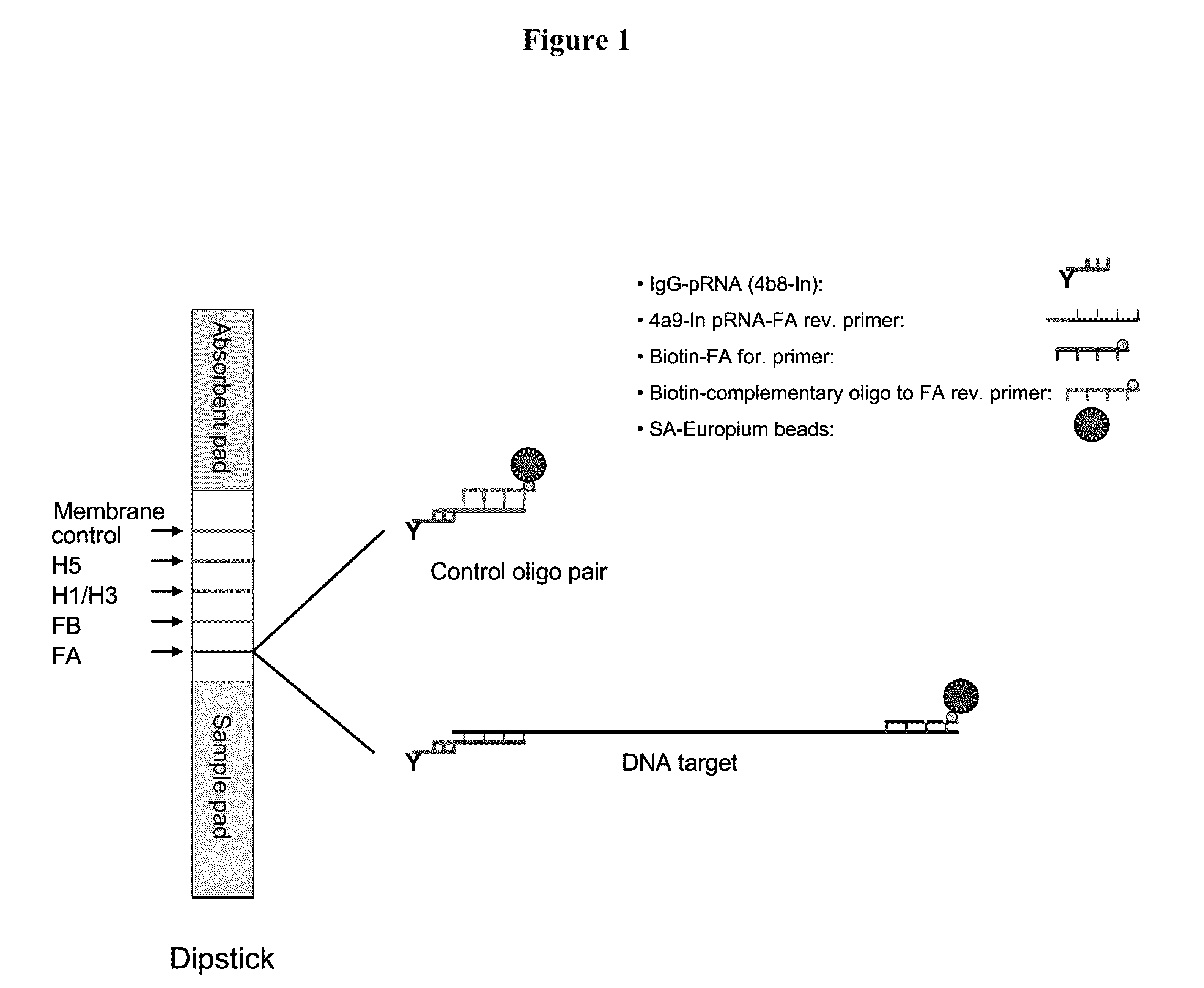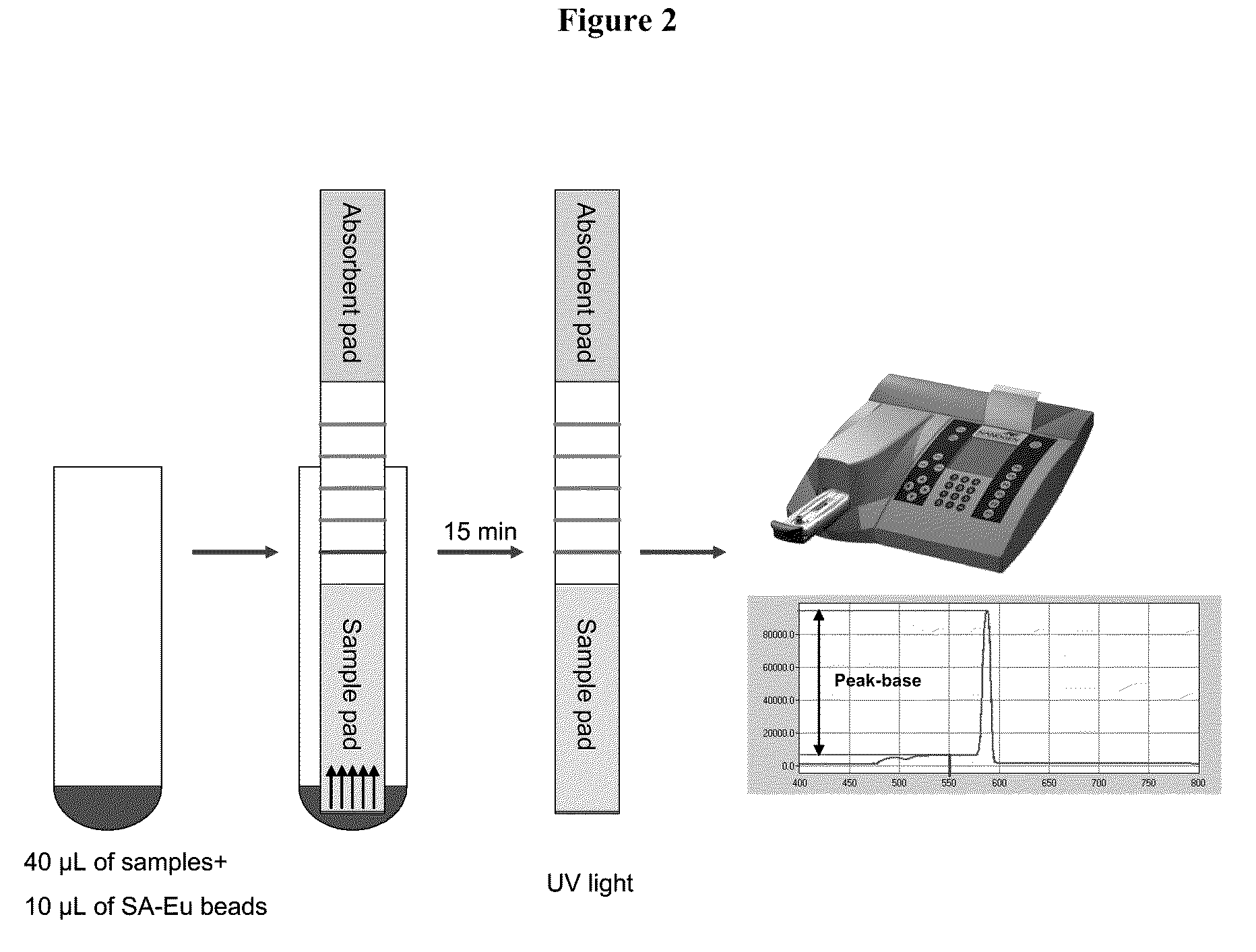Methods for detecting nucleic acids in a sample
a nucleic acid and sample technology, applied in biochemical apparatus and processes, specific use bioreactors/fermenters, after-treatment of biomass, etc., can solve the problems of increasing the sample-to-answer time beyond what, not meeting the need for low-cost, easily manufactured devices, etc., and achieves the effect of simplifying the work flow
- Summary
- Abstract
- Description
- Claims
- Application Information
AI Technical Summary
Benefits of technology
Problems solved by technology
Method used
Image
Examples
example 1
Detection Using pRNA Based Synthetic Binding System and Europium Label
[0121]In a representative embodiment, the method utilizes pRNA technology and europium beads to detect nucleic acids on a lateral flow strip. The strip consists of three different materials including sample pad, nitrocellulose (NC) membrane and an absorbent pad. One or more unique synthetic nucleotide pRNA polymers (SCU) are coupled to a protein (e.g., immunoglobulin) and then spotted onto NC membranes forming specific test lines. PCR amplicons are generated using a pair of modified primer, of which one primer is conjugated with one type of pRNA (SBU) which is complementary to the pRNA on the NC membrane (SCU) and the other primer is biotinylated. Strips are dipped into samples containing PCR amplicons and streptavidin coated europium beads and incubated at room temperature for 15 min. The presence of amplicons are then detected under UV light on the membrane of the strip through bridging between pRNA and europium...
example 2
Detection Results for the Control Reaction Pair
[0130]The control oligonucleotide pair (no amplicon of influenza A DNA) comprising biotinylated complementary oligonucleotide and the 4a9-In pRNA-FA reverse primer which binds to IgG-pRNA were processed as follows:
[0131]25 μM of the control oligonucleotide pair was incubated in 1×PCR buffer II at room temperature for ˜45 minutes. The reaction was diluted in LF buffer 1 to 10, 1, 0.5, 0.25, 0.125 and 0.1 pmol / test (pmol / 40 μL). SA-Eu beads were diluted in LF buffer 1 to 2 μg / test (2 μg / 10 μL) and sonicated for 1 sec for 4 pulses. 40 μL of the sample and 10 μL of SA-Eu beads suspension were transferred to a sample tube. Test strip dipsticks were inserted into each tube and incubated for 15 minutes at room temperature. Each dipstick was checked under UV light for presence of Eu binding. Each dipstick was inserted into a cassette suitable for reading with a fluID™ reader and the scan data were analyzed.
[0132]The data from the scan is shown ...
example 3
Detection Results for FA Amplicons
[0133]FA amplicons were generated by reverse transcriptase PCR (RT-PCR) reaction with 10, 100 and 1000 copies of transcripts. The amplicon concentration was measured using a capillary electrophoresis system and listed in the following Table.
TABLE 6FA amplicon reactionsFA-transcriptsMix 2Mix 3copies / RT-PCRMix 1(s / s)(bio / pRNA)(s / pRNA)Mix 4 (bio / s)reactionng / μLng / μLng / μLng / μL100014.9410.274.757.214.315.093.988.0214.437.5157.081004.21.270.450.613.881.480.440.174.971.190.642.8910000000000000NTC0000
[0134]FA amplicons were diluted in LF buffer 1 at 1 / 10, 1 / 100, and 1 / 1000 fold. SA-Eu beads were diluted in LF buffer 1 to 2 μg / test (2 μg / 10 μL) and sonicated for 1 sec for 4 pulses. 40 μL of the sample and 10 μL of SA-Eu beads suspension were transferred to a sample tube. Test strip dipsticks were inserted into each tube and incubated for 15 minutes at room temperature. Each dipstick was checked under UV light for presence of Eu binding. Each dipstick was ins...
PUM
| Property | Measurement | Unit |
|---|---|---|
| Volume | aaaaa | aaaaa |
| Molar density | aaaaa | aaaaa |
| Molar density | aaaaa | aaaaa |
Abstract
Description
Claims
Application Information
 Login to View More
Login to View More - R&D
- Intellectual Property
- Life Sciences
- Materials
- Tech Scout
- Unparalleled Data Quality
- Higher Quality Content
- 60% Fewer Hallucinations
Browse by: Latest US Patents, China's latest patents, Technical Efficacy Thesaurus, Application Domain, Technology Topic, Popular Technical Reports.
© 2025 PatSnap. All rights reserved.Legal|Privacy policy|Modern Slavery Act Transparency Statement|Sitemap|About US| Contact US: help@patsnap.com



